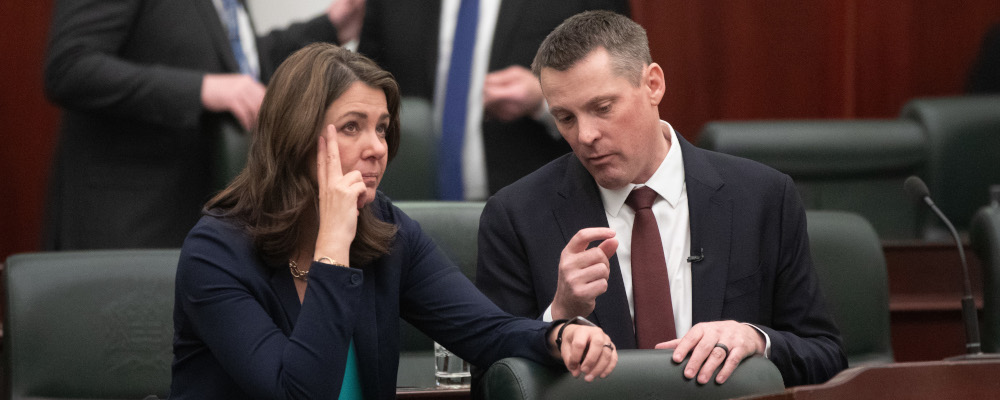Alberta’s 2024 budget ramps up funding for a medical care system that already spent more per person than in B.C. and Ontario, while achieving poorer health outcomes.
Big spending on medical care gets Alberta the best-paid doctors in the country. But not the most doctors. It also raises questions about the opportunity costs of dedicating more scarce resources to medical care rather than other needs.
Wellbeing, especially for younger residents, is collateral damage. This is because the budget spends relatively little where their health begins—like affordable homes, quality child care, poverty reduction, and a stable planet.
The path to a healthier Alberta requires a course correction, one that invests more urgently in the building blocks for a healthy society than in medical care. Here’s why.

In the latest budget, annual spending on medical care will grow by $3.6 billion as of 2026.
The increase for K-12 education is modest by comparison, up $0.7 billion. So are increases for postsecondary (up $0.8 billion) and child care ($0.3 billion), while spending on other social services is flat.
Since Canadians use more medical care after age 65 than earlier, Premier Smith’s 2024 budget will add new funding for retirees more than twice as fast as for residents under age 45. This leaves Alberta much less balanced in delivering investments for younger and older residents by comparison with B.C. and Ontario.
This isn’t good news if you care about helping Albertans get and stay well. Whenever people can’t access safe homes, good incomes, quality child care, and a healthy environment, evidence shows our medical care system will never be enough to prevent people from becoming injured, sick, or dying early.
We’re grateful that we can call on fire departments to put out the flames when we need them, but preventing fires is much less deadly, damaging, and costly. So it is with health care. Waiting to invest until people are ill is like showing up with hoses once the fire is already raging. We need to prevent the first sparks from getting out of hand.
This means that clinics and hospitals should be the last stop, not the first stop, in our health system. The first stops for good health are found in our neighbourhoods, jobs, child care, and schools.
Alberta used to budget this way. In 1976, the province spent approximately 36 percent more on social and education programs by comparison with medicine. Now, it spends at least 10 percent less.
So it’s no coincidence that medical costs rise, while access doesn’t. Because we haven’t been preventing enough people from joining the queue waiting for medical care, especially as our population ages and care needs become more complex.
This also helps to explain why medical professionals are burning out, even as the number of doctors per capita is up. Alberta had 128 physicians for every 100,000 people in 1976, including 70 family doctors. Today, Alberta has 244 doctors for every 100,000 residents, including 119 family physicians.
Some Albertans may think that higher provincial spending on medical care is a point of pride, especially when many Canadians are concerned about gaps in our medical system. But the data show this spending isn’t worth bragging about, because it does not buy the province better outcomes.
Not only does the Canadian Institute for Health Information show that Alberta spends more per resident on medical care than B.C. and Ontario, but it also reveals that Alberta ranks below those provinces and the national average for infant mortality, heart disease mortality, cervical cancer mortality, rectal cancer mortality, avoidable admissions for COPD (lung disease), avoidable admissions for diabetes, and even lower life expectancy.

While Alberta doesn’t often buy better health outcomes, it does buy the best-paid doctors in the country. Despite this, Alberta has not managed to recruit and retain physicians since the pandemic nearly as well as B.C., where physicians earn markedly less.
The size of the opportunity to spend more wisely may surprise readers. Even if Alberta’s medical budget was $2 billion less, it would still spend as much on medical care for every senior as does B.C. and Ontario. That’s a lot of inefficient spending on medical care when you consider that Ms. Smith’s government spends only $1.6 billion for $10/day child care (almost all of which is federal funding), and operating funds for affordable housing hover around $0.4 billion.
The bottom line is that Albertans, like all Canadians, get well when we invest in safe and affordable homes, living wages, quality child care and schools, and a healthy environment—even more urgently than we invest in medical care. Alberta used to follow this prescription decades ago. The Smith government would be wise to return to it.
Recommended for You

‘Can we actually be an independent country?’: Michael Ignatieff on the 60th anniversary of Lament for a Nation

Fred DeLorey: Why the NDP may be in even bigger trouble than we think

Michael Geist: Children accessing porn is a problem, but government-approved age verification technologies are not the answer

Daniel Zekveld: Age verification for pornography is not government overreach



